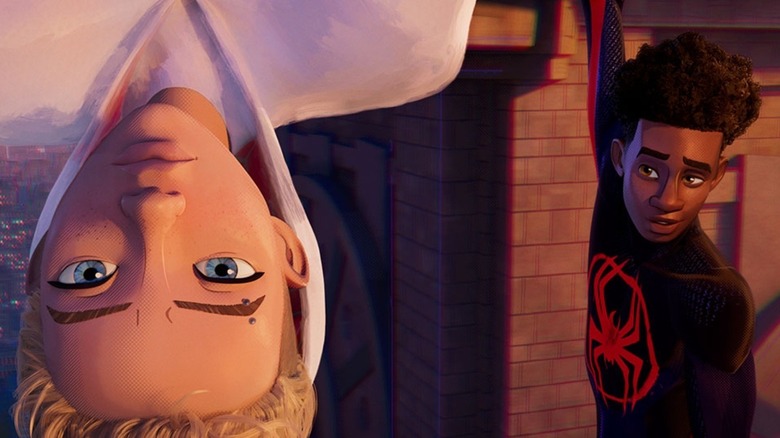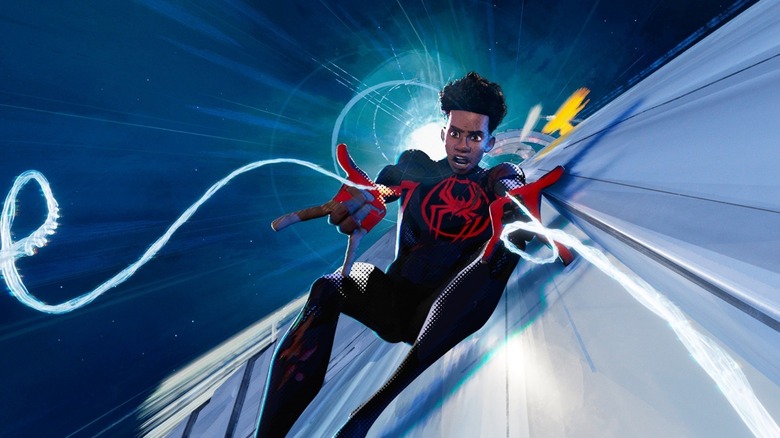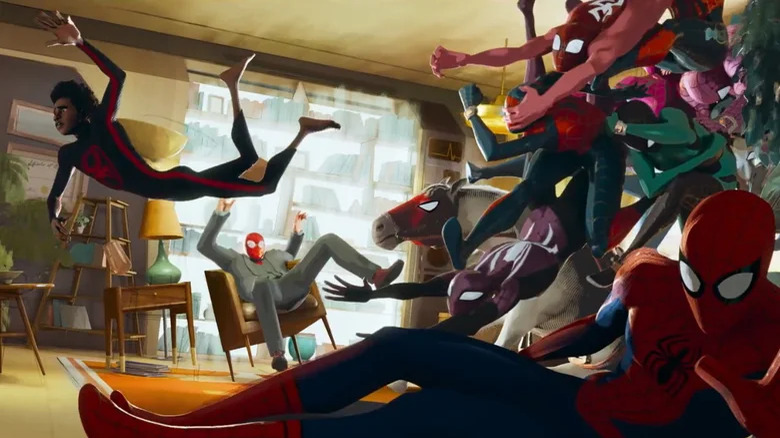Across The Spider-Verse Continues An Underrated Spider-Man Tradition
Spoilers for "Across the Spider-Verse" follow.
"Spider-Man: Across the Spider-Verse" is a revelation. If "Into the Spider-Verse" was the start of a revolution in the American studio animation landscape, one that showed studios could do more than just photorealistic 3D animation, and could instead experiment with the medium in exciting ways, then "Across the Spider-Verse" is the monumental affirmation of that revolution. This movie feels like this generation's "Toy Story," "Who Framed Roger Rabbit," or even "Snow White," a stunning miracle of filmmaking made by the best artists, and also the best use of the multiverse in a movie to date.
"Across the Spider-Verse," much like "The Matrix Reloaded," interrogates the tropes and concepts we usually associate with the Spider-Man mythos, whether tragedy is necessary for Spider-Man to exist, and even puts into question the very idea of canon. Unlike most Spider-Man movies, this one ends on a cliffhanger but still delivers a full and satisfying arc for its main character (maybe not the one you're thinking). Just because we know how the story goes doesn't mean the characters can't try to do things differently, and maybe, just maybe, Spider-Man can save them all.
However, as different and fresh as "Across the Spider-Verse" is, it still adheres to many tropes and traditions for the character, including continuing an underrated tradition started by the Sam Raimi movies: the recap.
With great plot comes great recapitulation
Nowadays, superhero movies come with as much background information and previous plot points to remember as a new comic book storyline. This makes it daunting to get into long-running franchises, let alone keep track of everything. The Marvel Cinematic Universe expects you to watch multiple movies and TV shows every single year just to understand a few easter eggs and cameos, without offering much help in letting audiences know exactly which parts to remember.
"Spider-Man: Across the Spider-Verse" is a sequel five years in the making, so it's been a minute since many people saw the first film. Thankfully, the fantastic opening scene offers a recap of the events of "Into the Spider-Verse" by having Gwen do a sick drum solo while telling Miles' story. She explains how Miles is both similar to all Spider-People, and also different, in that he lost greatly, won greatly, and saved the day, but has an ability to change others around him for the better. The recap is more than just a long flashback that replays the first movie from a slightly new perspective, and it is more than just an opening narration. Instead, it is a gorgeously animated sequence that puts us inside Gwen's head and shows how she feels about Miles and her role as Spider-Woman, while also foreshadowing the movie's central conflict.
A lost art
While the MCU movies never really offered recaps (though they desperately should!), this trend for the "Spider-Man" movies started with Sam Raimi's takes on the web-slinger, which used their opening title sequences to recap the events of the previous film. This helped remind audiences of the more significant moments and characters and how they'll play out in the sequel, (with the recap in "Spider-Man 2" also delivering the recap through stunning art by comic book artist Alex Ross).
These recaps helped give the movies a comic book look like you were watching the latest chapter in an ongoing story, a movie translation of a comic book page — which is exactly what makes the "Spider-Verse" movies so special and unique.
The recap is a valuable way to remind audiences about what came before, rather than leaving them confused or forcing them to rewatch dozens of titles before each new film. This may sadly be a lost art form in the era of long-running franchises like the MCU, but that's just another way "Across the Spider-Verse" echoes the best superhero movies while adding its own spin on tropes and ideas.


